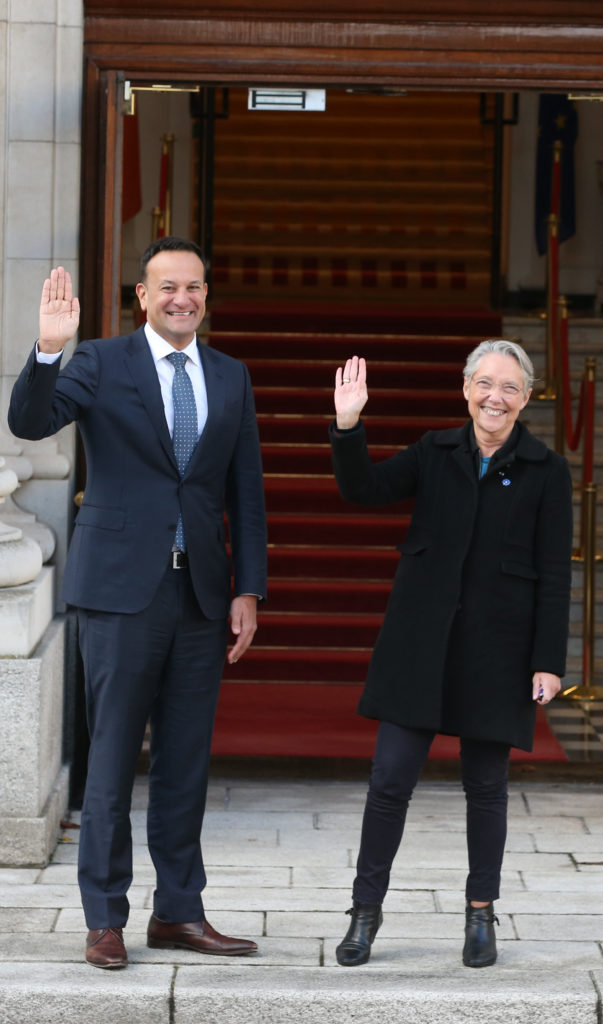WORK has begun on a high-voltage subsea power cable that will link the electricity grids of Ireland and France.
Dubbed the Celtic Interconnector, the initiative, which is due to be completed in 2026, will include enough capacity to power 450,000 homes and will create a direct electricity link from Ireland to the European Union.
Ireland’s EirGrid is working with its French equivalent, Réseau de Transport d’Electricité to deliver the 700-megawatt submarine cable.
The connection points will lie between the southern coast of Ireland and the northwest coast of France.
Work on the project officially began yesterday (November 13). If completed on time in 2026, integration to the grid is expected by 2027.
Ireland’s Minister for the Environment, Climate and Communications, Eamon Ryan, and French Energy Minister, Agnès Pannier-Runacher, came together to mark the commencement of construction work yesterday, with Minister Pannier-Runacher visiting the EirGrid offices in Dublin.
"I warmly welcome Minister Agnès Pannier-Runacher, along with her French colleagues to Dublin today, as we continue to strengthen our relationship with our nearest EU neighbour,” Minister Ryan said.
"The commencement of construction on the Celtic Interconnector project marks an important part of our wider energy ambitions.
“Increased electricity interconnection will be a key enabler in our growing use of renewable energy will also help lower energy prices and play a central role in Ireland’s journey to a net zero power system.
“It will also better integrate European electricity markets, and by using more diversified energy markets, this will improve our electricity security and resilience."
Minister Pannier-Runacher, said: "I am very happy and honoured to visit Ireland today.
“I am thrilled to inaugurate the Celtic Interconnector, which will increase the security of supply both for Ireland and France and contribute to the decarbonisation of our electricity mixes.
“This visit will enable us to prepare our future work together: this involves in particular our preparation of COP28, but also our joint co-chairing of the International Energy Agency ministerial in February 2024.
"Finally, I would like to thank the Irish technicians at ESB networks, who came to France recently to help repair the recent damages of the Ciaran storm."
 Taoiseach Leo Varadkar met with French Prime Minister Elisabeth Borne at Government Buildings in Dublin on November 13
Taoiseach Leo Varadkar met with French Prime Minister Elisabeth Borne at Government Buildings in Dublin on November 13The acknowledgement of the start of construction on the project by both ministers coincided with a visit to Ireland by the French Prime Minister, Élisabeth Borne which also took place yesterday.
Highlighting the importance of the Celtic Interconnector project, the Department of Environment, Climate and Communications explained: “Electricity interconnectors provide a way to share electricity between countries and the role of interconnection will increase in importance as the renewable energy sector becomes a larger proportion of supply in the Irish and European electricity system.
“The Celtic Interconnector will also form part of the Offshore Network Development Plan, intended to develop an integrated energy system for European energy markets.”
The European Commission is contributing €530.7 million from the commission’s Connecting Europe Facility (CEF) to help complete the design and delivery of the project.
Contracts for the Celtic Interconnector were signed in November 2022, in Paris.
Minister Ryan and Minister Agnès Pannier-Runacher's meeting coincided with a visit to Ireland by the French Prime Minister, Élisabeth Borne, to Dublin on the same day.
During yesterday’s meeting, Ireland and France signed a Joint Declaration of Intent on ‘Energy Transition Cooperation’.
The declaration outlines the “mutual willingness of both countries to accelerate the decarbonisation of energy systems”, and is part of a wider collective ambition for Europe to become the first climate neutral continent by 2050.

